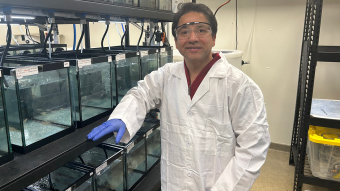March 4, 2020
Contact: Brian Consiglio, 573-882-9144, consigliob@missouri.edu

Self-inflicted injury, aggression toward others and yelling are common problem behaviors associated with young children diagnosed with autism spectrum disorder. These actions can result from the child being denied attention or access to items they enjoy, as well as from internal discomfort or environmental stressors such as noise or large crowds.
Now, a researcher at the University of Missouri has adjusted an existing treatment procedure aimed at reducing problem behaviors for children with autism spectrum disorder. Instead of traditional techniques, which require constant monitoring of the child, the new approach, which emphasizes momentary check-ins, provides more flexibility for parents and caregivers.
Kyle Hamilton, a behavior analyst at the Thompson Center for Autism and Neurodevelopmental Disorders, said that while existing intervention methods can be effective in controlled environments, they can be harder for busy parents, teachers and caregivers to implement in everyday situations.
Currently, experts advise parents to watch their children for long periods of time (up to several minutes) and give a reward only if the child’s behavior is appropriate the entire time. However, a parent that is cooking dinner in the kitchen may not be able to simultaneously supervise children playing in a nearby room for long periods of time. With Hamilton’s new approach, parents would only check their children periodically for a few seconds. If the child was behaving appropriately at the moment of the check, a small reward could be given.
“Rather than constantly monitoring the child, this new technique allows for periodic check-ins to see if the child is engaging in problem behaviors and reward them if we are seeing improvements,” Hamilton said. “Through positive reinforcement, we can help reduce problem behaviors for kids with autism, which will allow them to be around their typically developing peers more often in society.”
Given the broadness of the autism spectrum, these findings can lead to additional studies into which treatment options are most effective for reducing various problem behaviors. In addition to minimizing self-inflicted harm that can damage children’s long-term health, reducing problem behaviors can help remove the social stigma that many kids with autism face.
“By reducing problem behaviors, we can help these kids spend more time in natural environments, whether that is at the grocery store, pool, restaurants or school,” Hamilton said. “We want them to have every opportunity to live the most normal life possible and provide them more exposure to the natural world.”
“Examining the effectiveness of a variable momentary differential reinforcement of other behavior procedure on reduction and maintenance of problem behavior” was recently published in Current Developmental Disorders Reports. No funding was provided for the study, which was part of a master’s thesis.



